House of Salt and Sorrows: A Legacy of Tragedy and Perseverance
Reading Time: 13 min
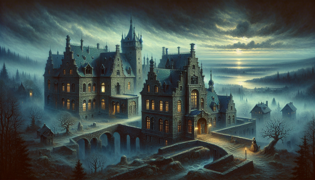
About Story: House of Salt and Sorrows: A Legacy of Tragedy and Perseverance is a Legend from germany set in the 19th Century. This Descriptive tale explores themes of Loss and is suitable for Adults. It offers Cultural insights. A mysterious German manor holds the echoes of lost past and the resilient spirit of those who dare to remember.
Introduction
A dense fog clung to the ancient German countryside as the last vestiges of twilight bled away into the night. The solitary figure of Charlotte approached the looming manor, its silhouette etched against a sky of bruised purples and grays. The journey had been long, the narrow, winding road accentuating both the isolation of her destination and the weight of the legacy she was about to inherit. Every step toward the house stirred a mix of trepidation and an inexplicable, magnetic draw, as though the wind itself carried whispers of sorrow and salt from generations past. The manor—dubbed the House of Salt and Sorrows—stood as a spectral monument to lost dreams and the burdens of history. Its weathered stone walls bore the scars of time and tragedy, while an ancient salt lode, once the lifeblood of the region, lent an acrid tang to the air. In the quiet, broken only by the distant crash of waves from the Baltic Sea, Charlotte could almost hear the murmurs of those who had suffered in silence within these walls. Somewhere in that layered silence lay the answers to painful mysteries: the story of her ancestors, the ebb and flow of love and despair, and the enduring spirit of a family that refused to be forgotten. As the cold wind swept through the broken arches and empty corridors, a sense of both foreboding and fragile hope began to take shape. Here, in this forsaken manor, tragedy and perseverance danced an eternal waltz. Charlotte’s heart pounded with the promise of revelations and the threat of deep, soul-wrenching sorrow. She knew her journey was not solely to confront the ghosts of the past, but to forge a future where the bitter taste of salt could perhaps be transformed into the sweetness of redemption.
The Haunted Inheritance
Charlotte arrived at the House of Salt and Sorrows with a heart equal parts heavy and hopeful. The carriage ride had been long and solitary, each clatter on the cobblestones echoing secrets and memories in the chill autumn air. Stepping onto the property, Charlotte’s boots crunched over a path layered with salt-encrusted pebbles and time-worn history. The manor’s iron gate creaked open as if welcoming a long-expected heir, its rusted bars a testament to a faded grandeur and cautious resilience.
Inside, the large foyer was a crypt of echoes. Faded portraits of stern-faced ancestors gazed down from the walls, their eyes seeming to follow Charlotte as she navigated the labyrinthine corridors. The scent of damp stone and ancient wood mingled with a faint briny tang from the nearby salt mines that had once defined her family’s fortune. Every room she encountered was a riddle in itself—a library filled with brittle manuscripts telling melancholic tales, a dining hall where broken chandeliers hung like forlorn memories, and a vast parlor where sunlight struggled to pierce through murky, stained windows.
In the quiet murmur of the house, Charlotte felt the weight of history. She discovered an old chest nestled in a forgotten corner of the manor. Its wooden surface was etched with intricate patterns that resembled salt crystals, a motif that permeated the building. Within lay remnants of a life lived in quiet torment: letters smeared with tears, a faded silk scarf imbued with a ghostly scent, and a diary that chronicled hidden sorrow and unresolved conflicts of those who had come before her. As she turned the yellowed pages, the words seemed to whisper out a sad lullaby, affirming that the house was not merely constructed of stone and mortar, but was built upon the aching dreams of lost souls.
Charlotte’s mind raced with questions. Who were these people whose life stories were incomplete, shrouded by tragedy? What secrets lay behind the veil of sorrow that had long since settled like a fine layer of salt on every surface? The atmosphere was saturated with mystery, each minute detail a clue to the burdens her lineage bore. Determined yet hesitant, she understood that her journey was twofold: to unearth the hidden pains of the past and, in doing so, confront her inner demons. In this realm of salt and sorrows, where the boundary between the living and the remembered blurred, Charlotte would come to learn that every fragment of grief carried a lesson in perseverance.
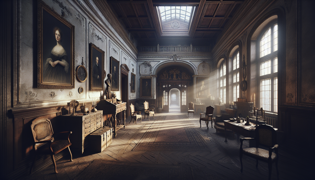
Echoes in the Salt
In the days that followed her arrival, Charlotte devoted herself to exploring the hidden corners of the manor. Every creaking floorboard and every whisper of the wind seemed to chime in with tales of unspoken pain and bygone beauty. With the diary clutched firmly in her hand, she embarked on a pilgrimage through rooms layered with history and secrets. One particular room, tucked away behind a heavy oak door, revealed more than she had bargained for.
The chamber was once a private study, its walls lined with books whose spines were adorned with intricate gold leaf. Now, the polished wood was marred by time and sorrow, reflecting a light that was more memory than illumination. Reaching out, Charlotte ran her fingers over a massive salt-crystal embedded in the mantelpiece—a relic that pulsed with the halo of a bygone legacy. In that instant, she could almost hear the distant whispers of her ancestors, voices merged with the sound of lapping waves from the Baltic. The salt itself was a symbol: it represented preservation, a means of keeping memories intact even as the present faded.
As Charlotte read the diary’s fragile script, she uncovered tales of forbidden love, of alliances forged in despair, and of a fateful night when a great storm obliterated dreams and lives alike. Each entry was a step deeper into a labyrinth of sorrow. The handwriting, delicate yet resolute, detailed a ritual—the secret sacrifice to the salt gods, intended to protect the family from a curse that had ravaged them through centuries. There was an air of inevitability threaded through every line, a forewarning that the past, with its haunting beauty and relentless grief, was destined to resurface.
The experience was almost overwhelming. It was as if the room itself had come alive, the salt on the mantelpiece shimmering with an inner fire as memories unfolded like spectral actors on a stage. Charlotte felt both terror and an odd comfort; the uncanny feeling of being accompanied by those who had traversed similar paths of anguish and hope. This was a communion with the past that threatened to drown her in its intensity, yet promised an inescapable clarity. In the interplay of light and shadow, memory and myth, Charlotte realized that she was now an integral thread in the intricate tapestry of her family’s tragic narrative—a narrative written in salt, tears, and the indomitable will to keep despair at bay.

The Grief Beneath
As the autumn days waned, Charlotte’s discoveries led her to the physical heart of the manor—the cellar, where the true legacy of sorrow lay hidden. Descending a narrow stone staircase, she encountered a subterranean chamber that appeared to have been carved out of the very rock itself. The atmosphere was heavier here, the air thick with the dust of forgotten torment and the weight of countless untold stories.
The cellar was a stark contrast to the crumbling elegance above. Damp and cool, its walls were lined with ancient crates, each once filled with salt that had preserved not only goods but memories as well. Inscribed upon the crates were names and dates, marking the passage of generations tied to the salt trade. Candlelight from a solitary, flickering lamp danced across the surfaces, casting long, trembling shadows that seemed to animate the sorrow etched in every grooved line of stone.
Among the relics, Charlotte discovered a hidden alcove containing a collection of mementos—a rusted locket, brittle letters scrawled in faded ink, and a portrait so fragile it threatened to crumble at a mere touch. The portrait depicted a family gathered in a moment of fleeting joy, the smiles hinting at a life that would soon dissolve into tragedy. It was as if time itself had conspired to halt the moment, preserving it under a veneer of salt and silence.
Standing there, Charlotte was overcome by an almost physical manifestation of grief. Every artifact seemed to weep its own secret pain, and in that cavernous space beneath the manor, she began to fully grasp the nature of the curse that had entwined her ancestry. The voices of the past, now a palpable hum in the cold air, communicated a single, resounding message: grief was both a chain and a key. In that deep, forgotten cellar, she sensed that the weight of loss had not entirely been doomed to despair—it could also be transformed into a steadfast resolve to honor the memory of those who had suffered. The realization was as chilling as it was liberating. Here, in the chilled bowels of the manor, Charlotte understood that her journey was not just about unearthing sorrow but about accepting it and, in doing so, learning to carry on with an inner strength that defied the relentless passage of time.
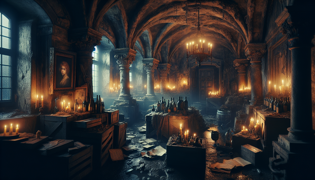
A Binding Legacy
The revelations gleaned from the quiet alcoves and shadowed corridors had set Charlotte on a collision course with a destiny steeped in both wonder and despair. One stormy night, as rain lashed against the stone walls of the manor and winds howled like ancient spirits, she resolved to confront the spectral forces that lingered among the relics. The manor, it seemed, was unwilling to relinquish its secrets; instead, it summoned forth apparitions born of salty tears and long-held grudges.
In the flicker of a hastily kindled fire, Charlotte found herself face-to-face with a figure shrouded in shifting mists—a spectral embodiment of her forebearers’ unresolved melancholy. The ghost, draped in tattered garments that mirrored the stagnant fabric of the late 19th century, regarded her with eyes that burned with both sorrow and determination. Rather than recoil in terror, Charlotte’s spirit resonated with the figure. In the silence between thunderclaps, words unspoken passed like a delicate current. She understood that this confrontation was not a battle, but a communion—a chance to reconcile the beauty of a legacy entwined with despair and hope.
The dialogue was quiet, wrapped in the language of shared wounds and a mutual longing for redemption. The apparition recounted the tragic tale of a family cursed by fate—a curse forged in a moment of bitter sacrifice amidst a raging storm and a desperate bid for salvation. In a gentle cadence, the ghost implored Charlotte to accept her heritage with grace and firmness, urging her to mend the torn tapestry of memory by embracing both the sorrow and the wisdom it carried. In that spectral moment, the manor transformed from a mausoleum of grief into a solemn sanctuary of human perseverance. The storm outside was matched by the turbulent emotions within, yet amidst the tempest, a fragile understanding blossomed. Charlotte realized that the binding of her fate with the spirits of the past was not to condemn her, but to empower her in the struggle against despair. It was a legacy wrought from salt and sorrows, yet imbued with the promise of resilience transcending the darkest of nights.
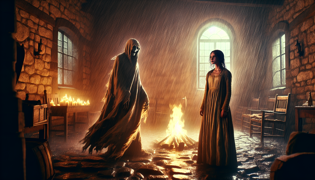
The Dawn of Remembrance
As the storm subsided and dawn approached, the relentless night yielded to fragile, silver light. In that tender hour, Charlotte felt a subtle but profound transformation as the memories of salt and sorrow began to soften into a poignant tribute to the resilience of life. The manor, once a stage for spectral confessions and despair, now seemed to exhale a gentle calm that promised renewal.
In the early morning glow, Charlotte wandered the grounds with newfound clarity. The bitter wind had morphed into a cool caress, and the heavy scent of salt and damp earth was now tinged with the promise of rebirth. The manor’s crumbling facade, though still steeped in its turbulent past, reflected an intimacy that spoke of healing. Vivid ribbons of early sunlight broke through the lingering fog, dazzling against the age-old stone and revealing intricate carvings and faded inscriptions that chronicled both suffering and love.
Standing before a secluded courtyard lined with ancient olive trees and salt-stained benches, Charlotte felt that the final piece of her journey was at hand. The ghosts of her lineage had not vanished but had receded into a realm where they could be honored rather than feared. In that tranquil space, the whispers of sorrow transformed into soft benedictions, urging her to carry forward the legacy with courage and tenderness. Here, every cracked stone and every whisper of wind was a testament to the binding power of memory and the beauty found even in sadness.
As she prepared to leave the manor behind, Charlotte promised herself to remember not only the tragedies but also the lessons of perseverance that resounded through each heart-wrenching chapter of her family’s past. In that dawning moment of remembrance, sorrow was transmuted into a quiet strength—a beacon of hope for the generations to come. The House of Salt and Sorrows had, through its timeworn corridors and ethereal whispers, imparted one enduring truth: that even in the gravest darkness, the promise of a new day and the resilient light of human spirit could never be wholly extinguished.
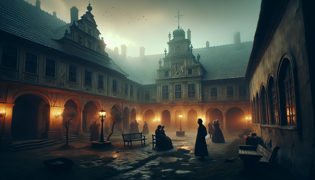
Conclusion
As the final rays of a gentle morning illuminated the faded contours of the House of Salt and Sorrows, Charlotte stepped away from the threshold of darkness and into a future reimagined by her own resolve. In those final hours within the manor’s embrace, she had witnessed the embodiment of a legacy that was as much about enduring love and indelible sorrow as it was about the healing power that follows profound loss. The journey had etched in her heart an immutable lesson: that sorrow, when met with the courage to understand and the strength to forgive, transforms into a source of incomparable resilience.
In the quiet aftermath of revelations and spectral dialogues, the manor’s somber corridors resonated with the memory of ancestral voices—voices that, though marred by loss, carried the promise of redemption. Charlotte, now a guardian of that bittersweet inheritance, felt a deep kinship with every tear shed and every whisper of hope that lingered within those salt-stained walls. With gentle determination, she embraced the truth that her future was intertwined with the past, not as a chain that bound her, but as a tapestry that enriched her journey with lessons of perseverance.
In leaving the manor behind, Charlotte carried with her the clarity of a soul that had transmuted its deepest sorrows into the strength to move forward. The House of Salt and Sorrows remained, now a monument not solely of tragedy, but of the relentless light of the human spirit that refuses to be extinguished. It was a reminder that from the ashes of defeat, beauty and hope can indeed arise—a truth that Charlotte would forever embody as she stepped into the dawn of her own, reimagined destiny.

















